Minds On
Heat
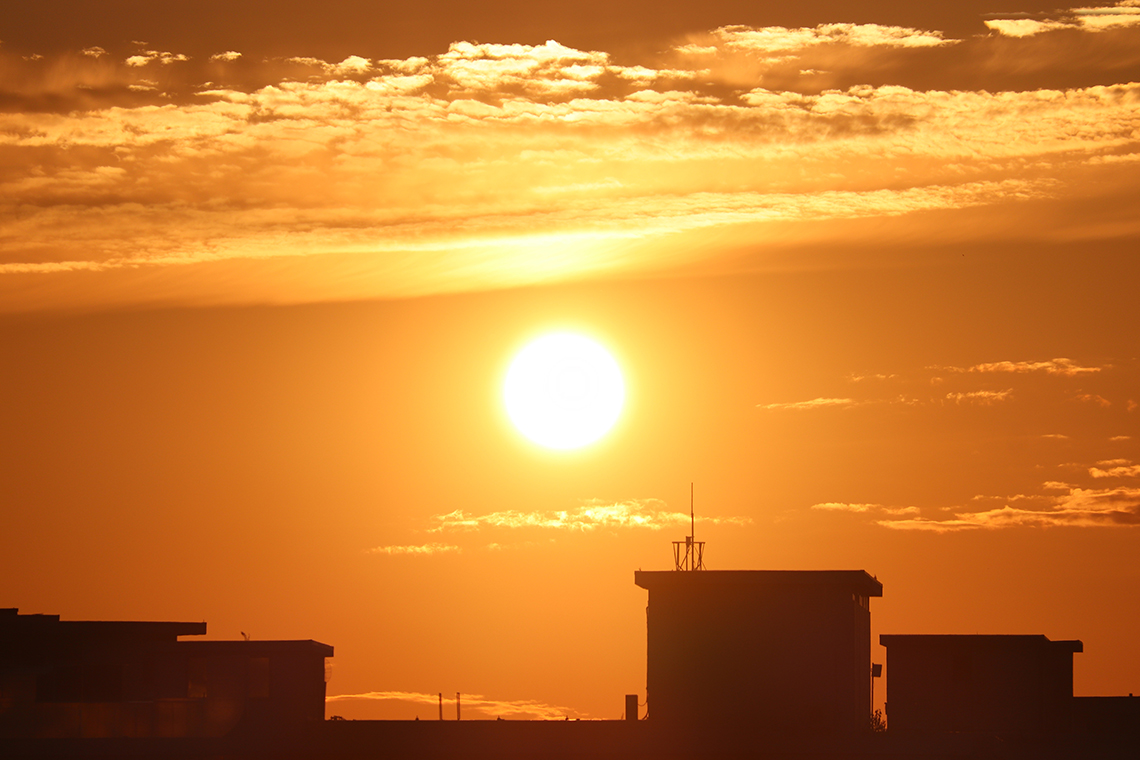
Brainstorm
Brainstorm
Let’s think about the following questions:
- What do we use heat for?
- Where does this heat come from?
Brainstorm and record your ideas in a notebook or another method of your choice.
Action
How is heat produced?
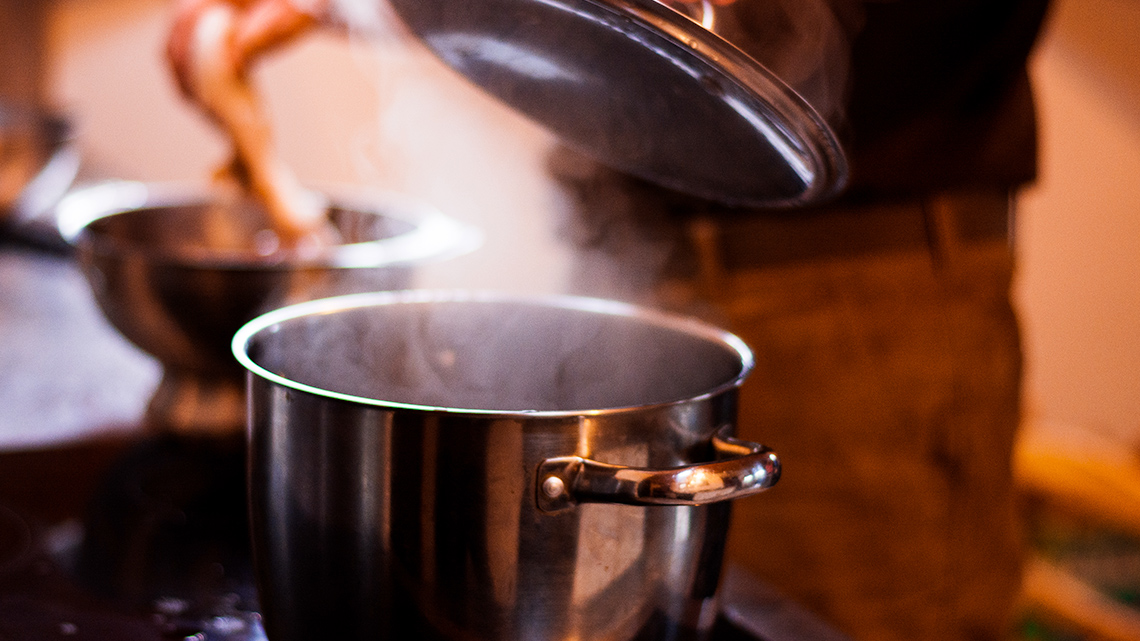
What is the difference between heat and temperature?
Temperature is the degree of hotness or coldness of a body or environment.
What gives something its temperature?
Temperature is created by a form of energy, and we can create heat in various ways, but it always involves adding energy.
If someone was holding a mug of hot coffee or tea, their hands would heat up. The heat is transferred from the mug to their hands, which distinguishes it from temperature.
We wouldn’t say that the temperature is transferred, but that the heat was. Therefore, temperature is a measure of how much heat was transferred.
Heat is defined by the transfer of energy, and it can happen in three ways: conduction, convection, and radiation.

A pot boiling on a stove along with three definitions. Convection means the transfer of fluid to another due to movement within the fluid. Conduction means the movement of heat in an object or between objects when they are touching. Radiation means the transfer of energy through electromagnetic waves.
Energy transfer
Press the following tabs to explore the three types of energy transfer.
When energy is transferred to an object, the energy of the particles increases. This means that particles have more kinetic energy, and they start to move and vibrate faster. As particles move faster, they bump into other particles and transfer some of their energy, which is called conduction.
Think about a pot on the stove. You only heat the bottom of the pot that is touching the stove, but this causes the contents inside of it to heat up, too. This transfer of energy is called convection. Convection is the transfer of energy from one place to another by the movement of gas or liquid particles. When the gas or liquid is heated, the substance expands, and the particles move faster, which causes the substance to heat.
Radiation is the transfer of energy through electromagnetic waves. Where does the energy on the Earth come from? The sun! The sun is very hot and radiates light that heats up our atmosphere. It is different from convection or conduction because it does not require objects to be touching each other, or the movement or particles.
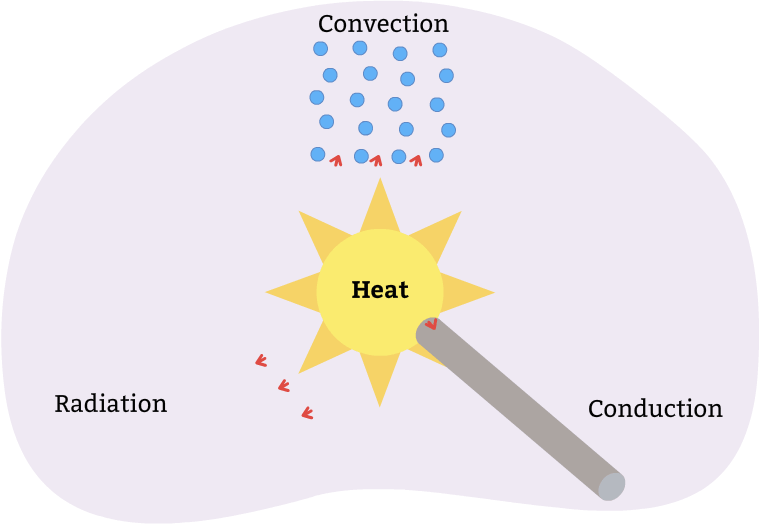
Colour diagram of heat energy. The sun is in the centre. Around the edges are three types of heat energy: conduction, convection, and radiation. Radiation is shown as wavy lines radiating away from the sun. Convection is shown as wavy lines going outward from the sun and impacting particles. The particles are coloured from blue to yellow to red, representing cold to hot, with the red particles at the top. Conduction is shown as a metal rod with one end touching the sun and a wavy line inside the metal rod indicating the direction of heat conduction as moving away from the sun. The metal rod is red, representing hot, where it touches the sun and gray, representing cold, at its furthest extremity.
Learning check!
After exploring the different types of energy transfers, consider the following:
- How is the heat transferred?
- What is happening to the particles during this heat transfer?
- What is a real-world example of this heat transfer?
Complete the Heat Transfer Activity in your notebook or using the following fillable and printable document. If you would like, you can use speech-to-text or audio recording tools to record your thoughts.
Heat Transfer Type |
How is the heat transferred? |
What is happening to the particles? |
What is a real-world example of this heat transfer? |
|---|---|---|---|
Press the ‘Activity’ button to access Heat Transfer Activity.
Explore the following statements and select either “True” or “False.”
Select the correct answer, then press ‘Check Answer’ to see how you did.
Energy in the environment
Press the following tabs to explore energy transfers from the environment.
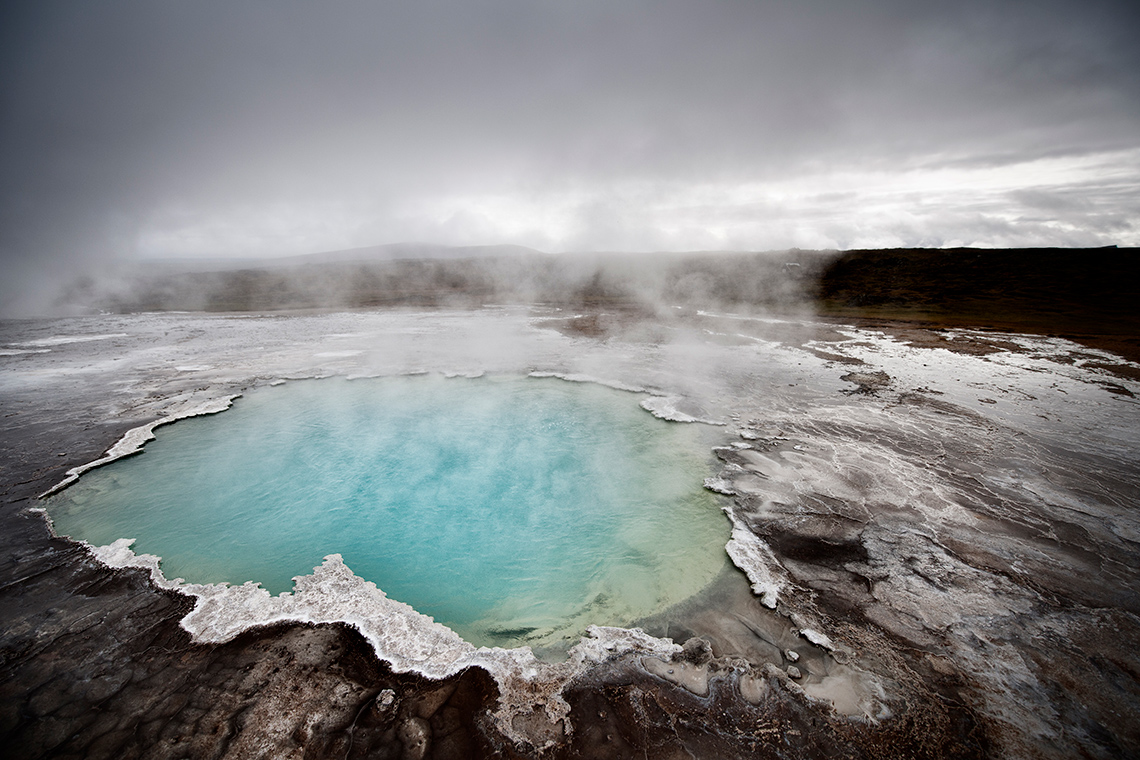
The Sun is a major source of thermal energy on Earth’s surface. Another hidden source of thermal energy is geothermal energy within the Earth. We notice the effects of this energy during instances like volcanic eruptions, or hot springs boiling liquid to the surface of the Earth. The Earth’s core is estimated to be close to 7000 degrees, and this thermal energy is conducted through all the layers of Earth, which helps to form new rocks and minerals.
Rocks inside Earth are constantly melting and solidify. When hot magma is pushed to the surface in a volcanic eruption, it cools and then hardens into a new rock.
In substances such as water and air, thermal energy can be transferred from one area to another. Uneven heating of air at the Earth’s surface can produce convection currents in the air, which typically is called “wind.” The air will feel cooler near lakes and oceans during the Summer because convection does not heat the air and water the same. The cooler air above lakes and oceans is pushed over the land and upward, which is usually called a sea breeze. When the sun goes down in the evening, the land cools more quickly than the water, and the cooler air moves from the land out towards the water, called a “land breeze.”

Most of the radiant energy from the Sun (also called solar energy) that reaches the Earth is in the form of visible light or UV rays. Most of these rays are absorbed by Earth’s atmosphere, and the rest are absorbed or reflected by clouds, water, land, buildings, our bodies, and other living things. This absorbed energy warms the object.
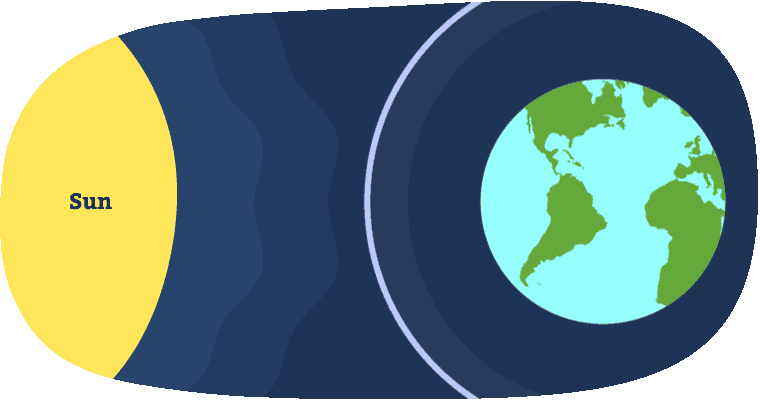
Learning check!
For each sentence, select the missing word from the drop-down menu.
Global connection
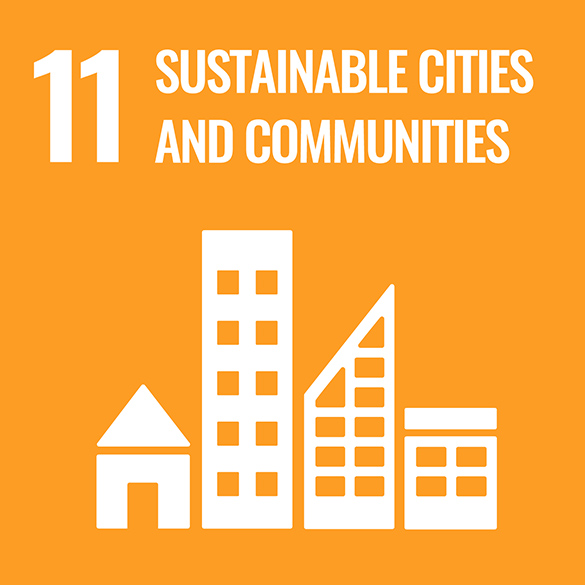
The United Nations (UN) is a group of many countries from around the world that have come together to create a better future for people and the environment. They have created 17 goals called the Sustainable Development Goals.
This learning activity is connected to Goal #11: Sustainable Cities and Communities. This means that our cities and communities should be inclusive, safe, resilient, and sustainable. Communities that are not sustainable can lead to pollution, unrest, insecurity, lack of economic growth, and more.
Energy efficient
When designing sustainable cities and communities, the use of energy efficient buildings should be considered.
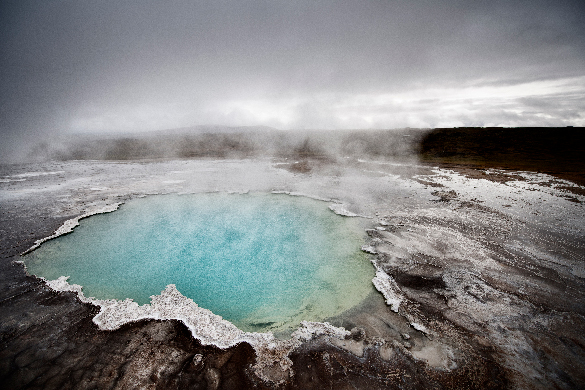
In the previous section of this learning activity, you learned about conduction, convection, and radiation as different ways to transfer energy. These were all examples of energy transferring for heat. In some scenarios, you want to prevent heat transfer, such as when heating a building.
Energy efficient buildings are buildings that are designed or upgraded to get the most work out of the energy that is supplied by reducing energy loss. Energy efficient buildings are less expensive to operate, more comfortable to live in, and more environmentally friendly. It is important that you build energy efficient buildings in a location that allows you to take advantage of natural resources, such as the sun or wind, depending on the technology that you install.
One of the ways that engineers reduce the amount of energy required to heat or cool a building is by providing good insulation.
Insulation is a material or substance that is used to prevent the transfer of heat, thus trapping the heat or cool air inside a house or building. Insulation slows down the flow of heat.
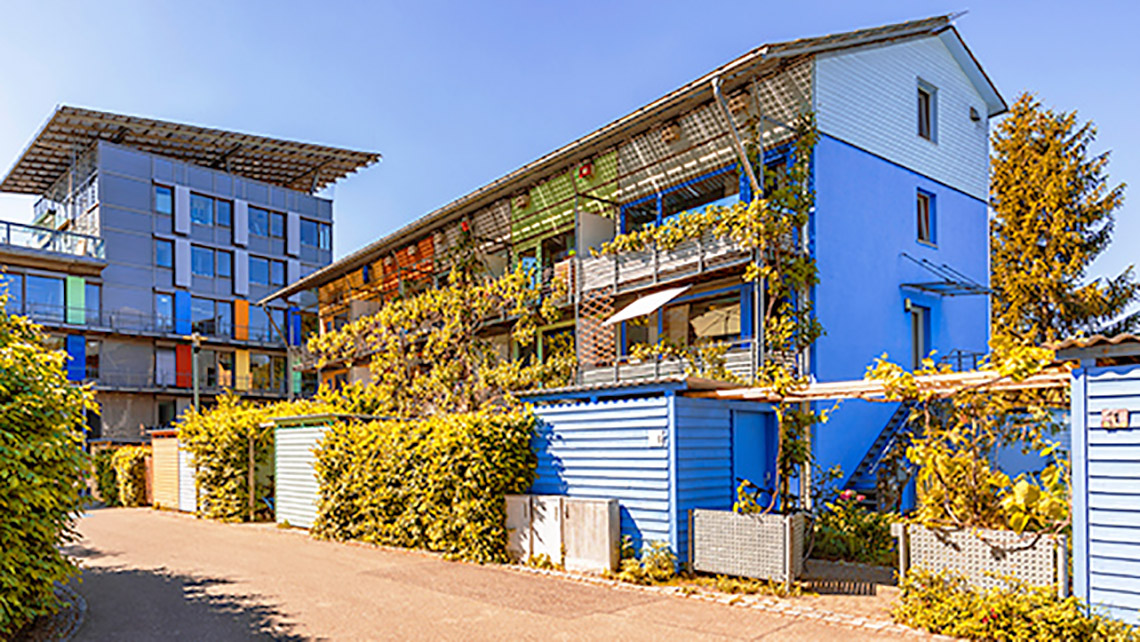
Designing insulated items
Your task is to create insulated bottles that will keep water hot for as long as possible by designing, and if possible, creating and testing different insulated bottle designs.
Before beginning your design, explore this video to learn about the steps of the Engineering Design Process.
In this activity, you will:
- identify materials that are good or poor thermal insulators
- list modes of heat transfer, and identify where convection and conduction occur in an insulated container
- describe the effect of insulation thickness on heat transfer
Explore the following two options and choose one to complete using the Engineering Design Process.
Option A
Always be sure to do your safety checks before building your design!
You may use the following organizer to record your design or another method of your choice.
Complete the Engineering Design Sheet in your notebook or using the following fillable and printable document. If you would like, you can use speech-to-text or audio recording tools to record your thoughts.
|
Initiating and Planning |
|||
|
The goal is to prevent heat from leaving your bottle. What types of materials do you think would be good at this? Why? Does the thickness of your insulation matter? Explain what you think would happen if you doubled the amount of insulation for each bottle. |
|||
|
Performing and Recording |
|||
Follow the procedure provided in the learning activity and record your results in the following table. |
|||
Temperature |
|||
Material |
Initial |
5 minutes |
10 minutes |
|
Control: No insulation |
|||
|
Test Case: |
|||
|
Test Case: |
|||
|
Test Case: |
|||
Analyzing and Interpreting |
|||
|
What material kept the water the hottest? Is this what you predicted? |
|||
Extending |
|||
|
If a fan was used for ten minutes, would that change the temperature or effectiveness of the insulation? Why or why not? |
|||
Connecting |
|||
|
Based on what you’ve learned, how does a winter jacket keep you warm in the winter months? How can you apply what you learned about the construction of insulated beverage containers to the design of insulation for homes and buildings to make them more energy efficient? |
|||
Press the ‘Activity’ button to access Engineering Design Sheet.
Press the following tabs to access how to design an insulated plastic bottle.
You will test three different materials for the insulation of a plastic bottle. You will also test a bottle with no insulation as the “control” to compare the other designs to.
You will need:
- four plastic bottles with tight fitting lids
- various insulation materials (aluminum foil, construction paper, felt, bubble wrap, etc.)
- hot or warm water
- thermometers (more than one if possible)
- fan
Let’s respond to the following prompts as you initiate and plan your insulated plastic bottle design:
- The goal is to prevent heat from leaving your bottle. What types of materials do you think would be good at this? Why?
- Does the thickness of your insulation matter? Explain what you think would happen if you doubled the amount of insulation for each bottle.
Record your ideas in a notebook or another method of your choice.
Explore the following steps to build and test your insulated plastic bottle designs:
- With a method of your choice (tape, glue, etc.) apply a different insulation material to each of your bottles.
- Fill each of the bottles with hot or warm water.
- Place a thermometer in each bottle and record the temperature in a table, including your control bottle. (Note: If you do not have more than one thermometer, you could test each bottle one at a time, instead. If you do not have any thermometers, you can compare temperatures to one another and rank them hottest to coolest.)
- Wait ten minutes and record the temperature. (Optional: Wait another 5-10 minutes and check the temperatures again.)
- With the help of an adult, discard the leftover water.
Reflect on the following prompts to analyze and interpret the results of your insulated plastic bottle design:
- What material kept the water the hottest?
- Is this what you predicted?
Then, respond to the following prompt to extend your learning:
- If a fan was used for ten minutes, would that change the temperature or effectiveness of the insulation? Why or why not?
Record your ideas in a notebook or another method of your choice.
Respond to the following prompts as you connect your learning to a real-life scenario:
- Based on what you’ve learned, how does a winter jacket keep you warm in the winter months?
- How can you apply what you learned about the construction of insulated beverage containers to the design of insulation for homes and buildings to make them more energy efficient?
Record your thoughts and ideas in a notebook or another method of your choice.
Option B
Design, and if possible, build a product that will minimize heat loss, using any materials you choose.
Consider the following as you design your product:
- How did you know this would minimize heat loss?
- What did you observe during this building? What would you do differently next time?
Record your design ideas in a notebook or another method of your choice.
Generating solutions
You may use the following checklist to guide and develop your solution of building a product that will minimize heat loss.
Generate many possible solutions by…
Consolidation
Costs vs. benefits
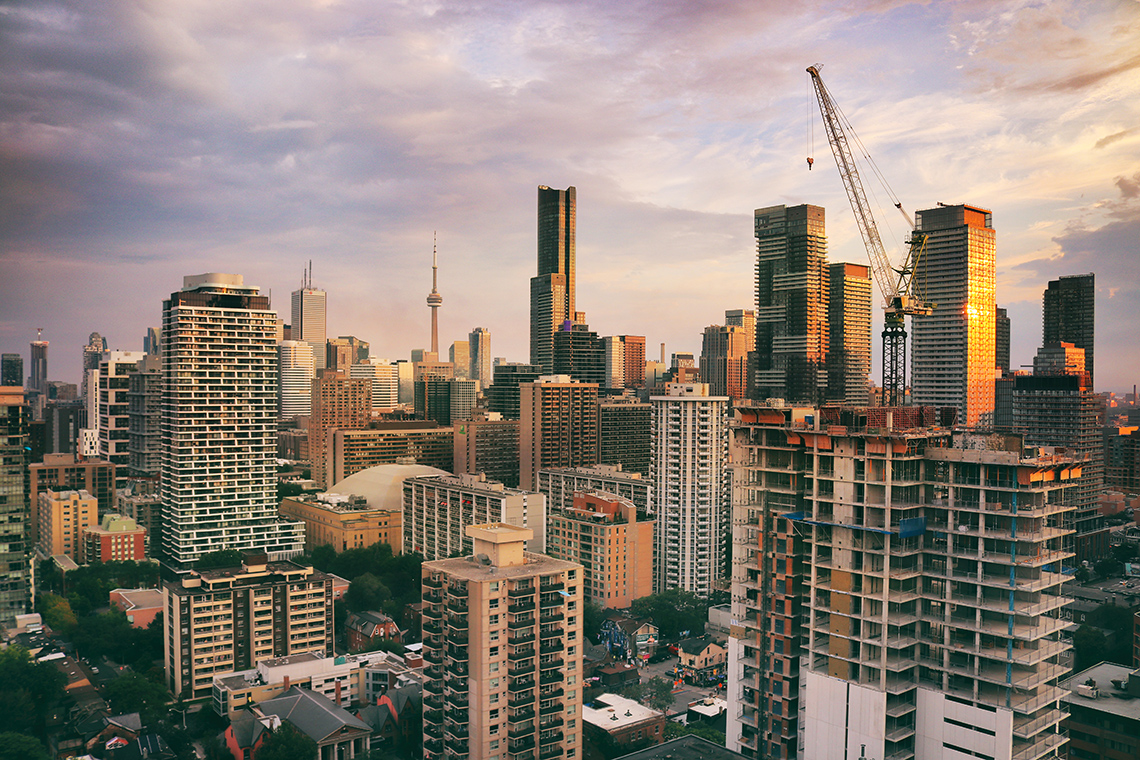
As you have investigated, insulation is a way to reduce heat loss.
How can you use this understanding to create a report about the importance of insulation in the design of energy efficient buildings, and how will this help to meet the UN Sustainable Development Goal #11?
Your report can be an oral or written description, or presented in a method of your choice.
Consider the following questions to guide your report:
- How is heat transferred from inside to outside a building?
- How does insulation reduce heat loss?
- Why is heat loss important to meeting the UN Sustainable Development Goal #11?
You may use the following checklist to help guide your report’s development.
I can share my knowledge by…
Reflection
As you read the following descriptions, select the one that best describes your current understanding of the learning in this activity. Press the corresponding button once you have made your choice.
I feel…
Now, expand on your ideas by recording your thoughts using a voice recorder, speech-to-text, or writing tool.
When you review your notes on this learning activity later, reflect on whether you would select a different description based on your further review of the material in this learning activity.